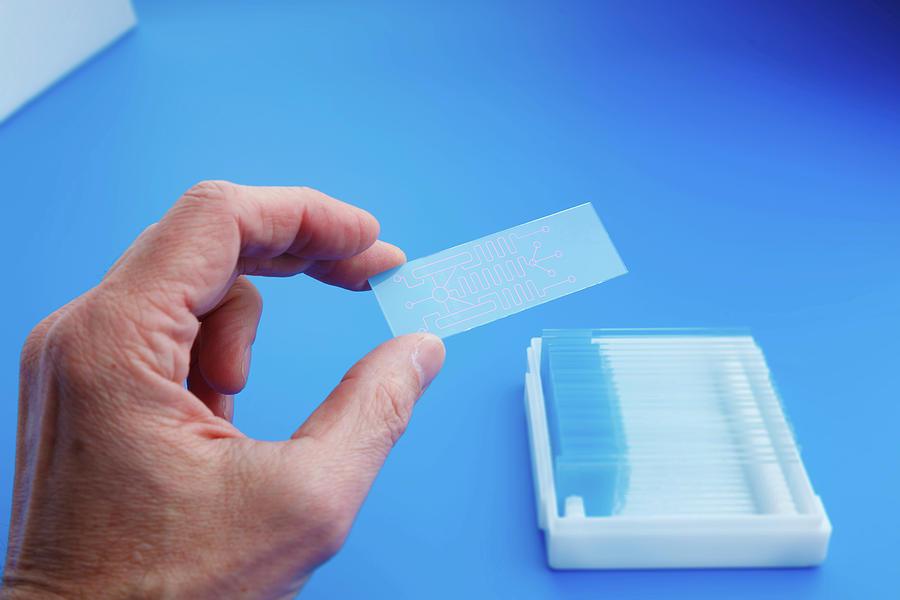Lab-on-a-chip and Microarrays (Biochip): New Frontiers in Miniaturized Diagnostics

Miniaturization Transforms Life Science Tools
Over the past few decades, advancements in microfabrication technologies have enabled the miniaturization of analytical tools commonly used in life sciences. Two major platforms that have benefited tremendously from miniaturization are lab-on-a-chip systems and DNA microarrays, together known as biochips. Both systems leverage micro- and nanofabrication techniques to integrate multiple laboratory functions on a single integrated microfluidic circuit smaller than a credit card. This miniaturization has transformed capabilities for chemical and biological analysis.
Lab-on-a-chip systems, also known as micro total analysis systems (μTAS), miniaturize and automate wet chemical and clinical laboratory procedures on a small silicon, glass or polymer chip. Various processes such as reaction, purification, detection and analysis that conventionally used largebenchtop instruments can now be carried out simultaneously in the same microfluidic device. Some key components of a typical Lab-On-A-Chip And Microarrays (Biochip) include microchannels etched in the substrate for fluid transport, micropumps for fluid propulsion, microvalves for fluid control and microsensors such as electrodes for analysis. Owing to their miniature size, lab-on-a-chip systems offer advantages such as low sample and reagent volume requirements, high assay throughput, fast analysis times and portability for point-of-care applications.
DNA Microarrays Enable High-throughput Genomic Analysis
DNA microarrays, commonly known as gene or DNA chips, allow researchers to analyze genetic variations or expression profiles of thousands of genes simultaneously. A DNA microarray typically consists of a solid substrate such as a glass slide onto which thousands of gene-specific DNA probes are immobilized in a well-defined array format using robotic spotting. When a fluorescently labeled sample containing thousands of gene sequences is passed over the chip, the genes will selectively hybridize or bind to their perfectly complementary probes on the array surface based on Watson-Crick base pairing rules of DNA. By measuring the intensities of fluorescence at each site, one can determine the abundance or detect mutations in thousands of genes in a single experiment.
Since their introduction in the mid-1990s, lab-on-a-chip and microarrays (biochip) have transformed genomic research and clinical diagnostics. Important uses of DNA microarrays include gene expression profiling to study global patterns of gene activity, genotyping and identification of genetic variations associated with diseases, microbial detection and epidemiology, detection of viral or bacterial pathogens, toxicity screening and pharmaceutical research. By providing a high-throughput platform for comprehensive genomic and transcriptomic analysis, microarrays continue enabling new biomedical discoveries through worldwide research consortiums like The Cancer Genome Atlas and International Cancer Genome Consortium.
Miniaturization Lowers Costs and Barriers to Utilization
The miniaturization afforded by lab-on-a-chip and microarrays (biochip) technologies presents many advantages beyond just size reduction. Perhaps most significantly, it lowers associated costs of reagents and manufacturing while improving assay throughput. This enables broader adoption across diagnostic, research and clinical applications that traditionally faced economic barriers when performed with conventional benchtop systems and equipment.
Lower reagent costs stem from drastically reduced sample and reagent volumes required for assays on miniaturized chips. For example, a typical DNA microarray experiment may require nanoliter volumes of target and reagent compared to microliter volumes on a microplate. Automated microfluidic systems incorporated into lab-on-a-chip further achieve cost savings by integrating multiple processing steps into a single device. Mass production of lab-on-a-chip and microarray devices using high-volume silicon wafer or glass slide fabrication also improves economies of scale. Lower per-assay costs increase accessibility for applications in resource-limited settings and point-of-care diagnosis.
Higher throughput enabled by miniaturization also reduces time required per experiment or diagnostic test as panels of assays can now be conducted simultaneously on a single chip. This improves overall efficiency and economies for applications requiring high-volume processing like genomic screening initiatives. The scale, scope and speed of today's genomic research would simply not be feasible without the throughput gains afforded by DNA microarray technologies. Miniaturization addresses both the economic and technical limitations that previously restricted high-throughput molecular assays mainly to core research laboratories.
Future of Lab-on-a-chip and Microarrays
Looking ahead, further integration and miniaturization is expected to exponentially increase the power and applications of lab-on-a-chip and microarrays (biochip) technologies. Advancements in microfabrication now enable the design of systems with tens to hundreds of parallel reaction and analysis pathways integrated onto a single device. Next-generation lab-on-a-chip will likely incorporate ever more sophisticated biochemical assays, multiplexing capabilities, automated fluidics and even on-chip wireless sensors for true sample-to-answer results.
Integration with companion technologies like synthetic biology will see the realization of biologically inspired "organ-on-a-chip" systems capable of recapitulating complex human tissue and organ functions. This will accelerate drug screening/toxicology and disease modeling approaches. Developments in nanoarrays might increase test panel capacity to millions of probes on a single chip surface. Cloud-based analytics and portable smartphone-based readers will provide scalable solutions for expanded testing and eHealth applications in low-resource environments and home settings. Though commercialization hurdles remain, continued convergence of miniaturized life science tools with MEMS, microfluidics, nanotechnology and digital platforms promises to revolutionize medicine and healthcare worldwide.
Get more insights on lab-on-a-chip and microarrays (biochip)
About Author:
Money Singh is a seasoned content writer with over four years of experience in the market research sector. Her expertise spans various industries, including food and beverages, biotechnology, chemical and materials, defense and aerospace, consumer goods, etc.
- Art
- Causes
- Crafts
- Dance
- Drinks
- Film
- Fitness
- Food
- Jogos
- Gardening
- Health
- Início
- Literature
- Music
- Networking
- Outro
- Party
- Religion
- Shopping
- Sports
- Theater
- Wellness
- IT, Cloud, Software and Technology


